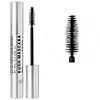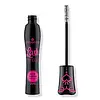What's inside
What's inside
 Key Ingredients
Key Ingredients

 Benefits
Benefits

 Concerns
Concerns

 Ingredients Side-by-side
Ingredients Side-by-side

Water
Skin ConditioningParaffin
PerfumingGlyceryl Stearate
EmollientSynthetic Beeswax
Emulsion StabilisingStearic Acid
CleansingAcacia Senegal Gum
MaskingButylene Glycol
HumectantPalmitic Acid
EmollientPolybutene
Oryza Sativa Bran Wax
Skin ConditioningVp/Eicosene Copolymer
Ozokerite
Emulsion StabilisingAminomethyl Propanol
BufferingHydrogenated Vegetable Oil
EmollientPhenoxyethanol
PreservativeStearyl Stearate
EmollientHydroxyethylcellulose
Emulsion StabilisingNylon-6
Papaver Somniferum Seed Oil
EmollientCannabis Sativa Seed Oil
EmollientGlycerin
HumectantHelianthus Annuus Seed Oil
EmollientDipteryx Odorata Seed Extract
MaskingTheobroma Grandiflorum Seed Butter
Skin ConditioningCopernicia Cerifera Cera
EmollientSilica
AbrasiveTropolone
Skin ConditioningAframomum Melegueta Seed Extract
Skin ConditioningHelichrysum Italicum Extract
AntiseborrhoeicCI 77499
Cosmetic ColorantWater, Paraffin, Glyceryl Stearate, Synthetic Beeswax, Stearic Acid, Acacia Senegal Gum, Butylene Glycol, Palmitic Acid, Polybutene, Oryza Sativa Bran Wax, Vp/Eicosene Copolymer, Ozokerite, Aminomethyl Propanol, Hydrogenated Vegetable Oil, Phenoxyethanol, Stearyl Stearate, Hydroxyethylcellulose, Nylon-6, Papaver Somniferum Seed Oil, Cannabis Sativa Seed Oil, Glycerin, Helianthus Annuus Seed Oil, Dipteryx Odorata Seed Extract, Theobroma Grandiflorum Seed Butter, Copernicia Cerifera Cera, Silica, Tropolone, Aframomum Melegueta Seed Extract, Helichrysum Italicum Extract, CI 77499
Water
Skin ConditioningRhus Verniciflua Peel Cera
EmollientGlyceryl Stearate Se
EmulsifyingButylene Glycol
HumectantAcacia Senegal Gum
MaskingOryza Sativa Bran Wax
Skin ConditioningPalmitic Acid
EmollientStearic Acid
CleansingAminomethyl Propanol
BufferingVp/Eicosene Copolymer
Helianthus Annuus Seed Oil
EmollientPrunus Amygdalus Dulcis Oil
Skin ConditioningSimmondsia Chinensis Seed Oil
EmollientTocopherol
AntioxidantCopernicia Cerifera Wax
Shorea Robusta Resin
TonicHydroxyethylcellulose
Emulsion StabilisingTocopheryl Acetate
AntioxidantTrimethyl Pentanyl Diisobutyrate
Ethylhexylglycerin
Skin ConditioningSodium Nitrate
SoothingDisodium Phosphate
BufferingSodium Phosphate
BufferingPolysorbate 60
EmulsifyingPhenoxyethanol
PreservativePotassium Sorbate
PreservativeSodium Dehydroacetate
PreservativeCI 77499
Cosmetic ColorantWater, Rhus Verniciflua Peel Cera, Glyceryl Stearate Se, Butylene Glycol, Acacia Senegal Gum, Oryza Sativa Bran Wax, Palmitic Acid, Stearic Acid, Aminomethyl Propanol, Vp/Eicosene Copolymer, Helianthus Annuus Seed Oil, Prunus Amygdalus Dulcis Oil, Simmondsia Chinensis Seed Oil, Tocopherol, Copernicia Cerifera Wax, Shorea Robusta Resin, Hydroxyethylcellulose, Tocopheryl Acetate, Trimethyl Pentanyl Diisobutyrate, Ethylhexylglycerin, Sodium Nitrate, Disodium Phosphate, Sodium Phosphate, Polysorbate 60, Phenoxyethanol, Potassium Sorbate, Sodium Dehydroacetate, CI 77499
 Reviews
Reviews

Ingredients Explained
These ingredients are found in both products.
Ingredients higher up in an ingredient list are typically present in a larger amount.
Acacia Senegal Gum has skin soothing, thickening, and formulation stabilizing properties. It comes from the Acacia tree that is native to sub-Saharan Africa.
Aminomethyl Propanol is used to adjust the pH of products. It is also used as a base to create other organic compounds. Having a balanced pH is important for protecting your skin.
Aminomethyl propanol is safe to use in cosmetics up to 1%. It is soluble in water.
Butylene Glycol (or BG) is used within cosmetic products for a few different reasons:
Overall, Butylene Glycol is a safe and well-rounded ingredient that works well with other ingredients.
Though this ingredient works well with most skin types, some people with sensitive skin may experience a reaction such as allergic rashes, closed comedones, or itchiness.
Learn more about Butylene GlycolCi 77499 is also hydrated iron III oxide. It is created from mixing red and black iron oxides. This helps give shades of darkness to a product.
Iron III oxides are classified as inorganic chemicals for coloring.
Helianthus Annuus Seed Oil is the oil derived from the seeds of a Sunflower. Sunflower seed oil is non-fragrant. It is an emollient, meaning it helps to soften the skin.
Sunflower seed oil contains many fatty acids. The fatty acids found in sunflower seeds include (from highest amount to least): linoleic acid, myristic acid, palmitic acid, stearic acid, arachidic acid, oleic acid, and linolenic acid.
These fatty acids help the skin create ceramides. Ceramides play a role in repairing the skin barrier.
Helianthus Annuus Seed Oil helps moisturize the skin. This in turn helps the skin look more rejuvenated and smoother.
Sunflowers are rich in vitamin E.
Historians believe Indigenous cultures of North America domesticated sunflowers before corn. Thus they relied on sunflower oil for a variety of uses. One such use is moisturizing skin and hair.
Sunflower seed oil may not be fungal acne safe. We recommend speaking with a professional if you have any concerns.
Learn more about Helianthus Annuus Seed OilHydroxyethylcellulose is used to improve the texture of products. It is created from a chemical reaction involving ethylene oxide and alkali-cellulose. Cellulose is a sugar found in plant cell walls and help give plants structure.
This ingredient helps stabilize products by preventing ingredients from separating. It can also help thicken the texture of a product.
This ingredient can also be found in pill medicines to help our bodies digest other ingredients.
Learn more about HydroxyethylcelluloseOryza Sativa Bran Wax is wax from the outer layer of a rice kernel. It has moisturizing properties due to its polysaccharides and omega-3 fatty acids content.
This ingredient is a byproduct of milling rice, or the operation to produce a whole grain rice product.
Palmitic Acid is a fatty acid naturally found in our skin and in many plant and animal sources. In cosmetics, it is usually derived from palm oil. It serves many purposes in skincare, acting as a cleanser, emollient, and emulsifier.
As an emollient, palmitic acid helps soften and smooth the skin by preventing water loss. In cleansers, it helps remove oil and dirt while creating foam.
Its emulsifying properties help stabilize products by keeping water and oil-based ingredients from separating.
This may not be suitable for fungal acne-prone skin, as fatty acids like this can sometimes trigger breakouts in sensitive individuals.
Learn more about Palmitic AcidPhenoxyethanol is a preservative that has germicide, antimicrobial, and aromatic properties. Studies show that phenoxyethanol can prevent microbial growth. By itself, it has a scent that is similar to that of a rose.
It's often used in formulations along with Caprylyl Glycol to preserve the shelf life of products.
Stearic Acid is a fatty acid. It is an emollient, emulsifier, and texture enhancer.
As an emollient, stearic acid helps soften skin. It aids the skin's protective barrier by preventing water loss. It also provides a gentle cleansing effect without stripping away natural oils.
Stearic acid may also be used to enhance the texture of products. It can add volume and stabilize ingredients such as water and oil. This can help water and oil ingredients from separating.
Sources of stearic acid include animal or vegetable fats/oils such as coconut or shea. It can be naturally found in butter, cocoa butter, shea butter, vegetable fats, and animal tallow.
This ingredient may not be Malassezia folliculitis, or fungal-acne safe.
Learn more about Stearic AcidWe don't have a description for Vp/Eicosene Copolymer yet.
Water. It's the most common cosmetic ingredient of all. You'll usually see it at the top of ingredient lists, meaning that it makes up the largest part of the product.
So why is it so popular? Water most often acts as a solvent - this means that it helps dissolve other ingredients into the formulation.
You'll also recognize water as that liquid we all need to stay alive. If you see this, drink a glass of water. Stay hydrated!
Learn more about Water